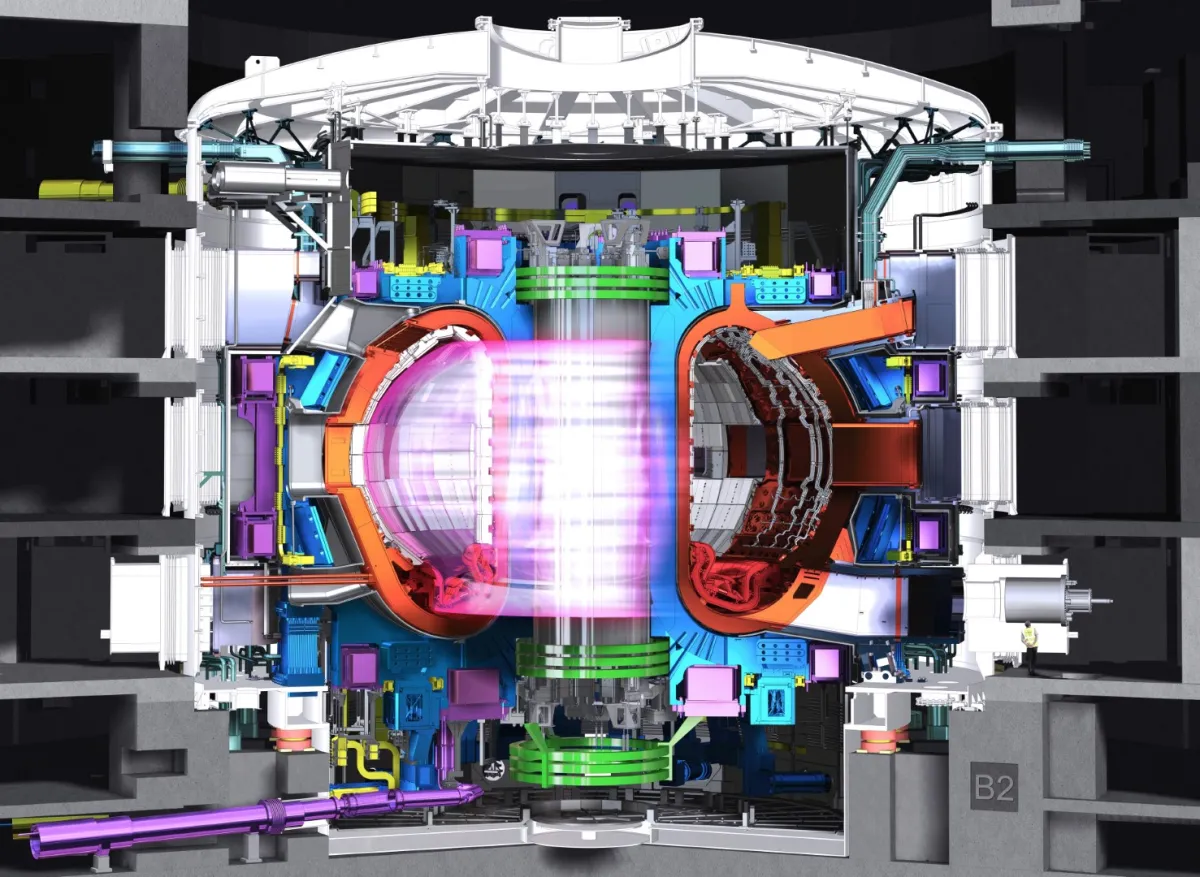ANU-ITER Research Training Scheme
We have teamed up with the ITER Organization to offer an ITER-aligned research training scheme. This scheme attracts high calibre research students who engage in cross-disciplinary collaboration across the ANU in the field of fusion energy research.

We have teamed up with the ITER Organization to offer an ITER-aligned research training scheme to attract the best research students. The discipline fields span much of the ANU, including mathematics, physics, computer science, engineering, and energy economics. Projects will be guided by ITER-relevant research either through ITER Science Fellow Professor Matthew Hole and/or ITER Organisation staff. We will offer a special topics course “The Science of Toroidal Magnetic Confinement” to bring students to the forefront of the field. Travel support is available for ANU students to attend training at ITER or an ITER-relevant lab.
What is the ANU-ITER Research Training Scheme?
This is an ITER-aligned research training scheme to attract the best research students, and a scholarship and a multi-disciplinary supervision panel. Top-up scholarships are available to Masters or PhD students, together with travel support for ANU students to attend training at ITER or an ITER-relevant lab.
Who can apply?
- Students applying for PhD scholarship and/or admissions
- Existing ANU PhD students (less than 9 months in) who join the program of activity
- International research masters students, who are on-track to join the ANU for a PhD (must have ANU supervisor commitment to stipend)
The ANU is committed to addressing the serious under-representation of women in science and mathematics disciplines. At least one third of the funding will be awarded to female applicants.
When will the scheme commence?
It is anticipated the scheme will commence in early 2021. Prospective applicants are invited to send an expression of interest to Professor Matthew Hole, who will provide regular updates on when the scheme opens. Matthew Hole can be contacted via email at matthew.hole@anu.edu.au
How is the scheme supported?
The scheme is supported by a consortium of partners, including central funding from the ANU through the Global Research Partnership Scheme, the College of Systems and Society and College of Engineering and Computer Science, the Mathematical Sciences Institute, the Research School of Computer Science, the Research School of Electrical, Energy and Materials Engineering, and private philanthropic support from Mr Nick Riley.
What Projects are available?
The list of illustrative projects is available here.
Opportunity is also available to suggest projects by writing to Professor Matthew Hole (matthew.hole@anu.edu.au). One objective of the scheme is to catalyse cross-disciplinary collaboration across the ANU in the field of fusion energy research.
How will applicants be selected?
A selection panel will be formed from the participating Colleges and Schools, and applicants selected based on CV and transcript.
Overview
Plasma is the 4th state of matter which constitutes more than 99% of the observable matter in the universe. Nuclear fusion powers the Sun and the stars through self-sustained thermonuclear reactions in a gravitationally confined plasma– unleashing huge amounts of energy through the binding together of light elements such as hydrogen and helium. If harnessed directly on Earth, fusion could produce virtually inexhaustible clean power, using seawater as the main fuel, with no greenhouse gas emissions, no proliferation risk, and no risk of catastrophic accidents. Radioactive waste is very low level and indirect, arising from neutron activation of the power plant core. With current technology, a fusion power plant could be completely recycled within 100 years.
The leading concept to realise fusion energy is toroidal magnetic confinement, in which strong magnetic fields are used to confine charged particles (that comprise the fusion plasma) in doughnut shaped magnetic fields. The quest is however fiendishly difficult. The description of these magnetic fields, their stability and plasma transport is a frontier mathematical and computational challenge. Technologies and control systems to diagnose and control the experiment need to be real-time, radiation hardened, and robust. New experiments will generate tens of Gigabytes per second from up to 100 diagnostics, leading to a total of a few hundred Petabytes per year. This creates challenges in data management, visualisation, and integrated modelling. Finally, new materials are needed to withstand extreme heat flux of a working reactor.
Cutting-edge toroidal fusion experiments are multi-billion dollar projects. The world’s largest science experiment, which will be the first to reach burning plasma conditions, is the $30 billion+ multinational ITER project under construction in Cadarache in the South of France. ANU scientists have been the lead proponents in forging a 2016 Australian participation agreement with ITER through the Australian Nuclear Science and Technology Organisation on behalf of Australian science. This agreement follows more than 50 years of research at the ANU. Today, the ANU is the only Australian institution with significant research credentials in fusion energy, and our research dates back to the Australian co-discoverer of fusion, Sir Mark Oliphant.
